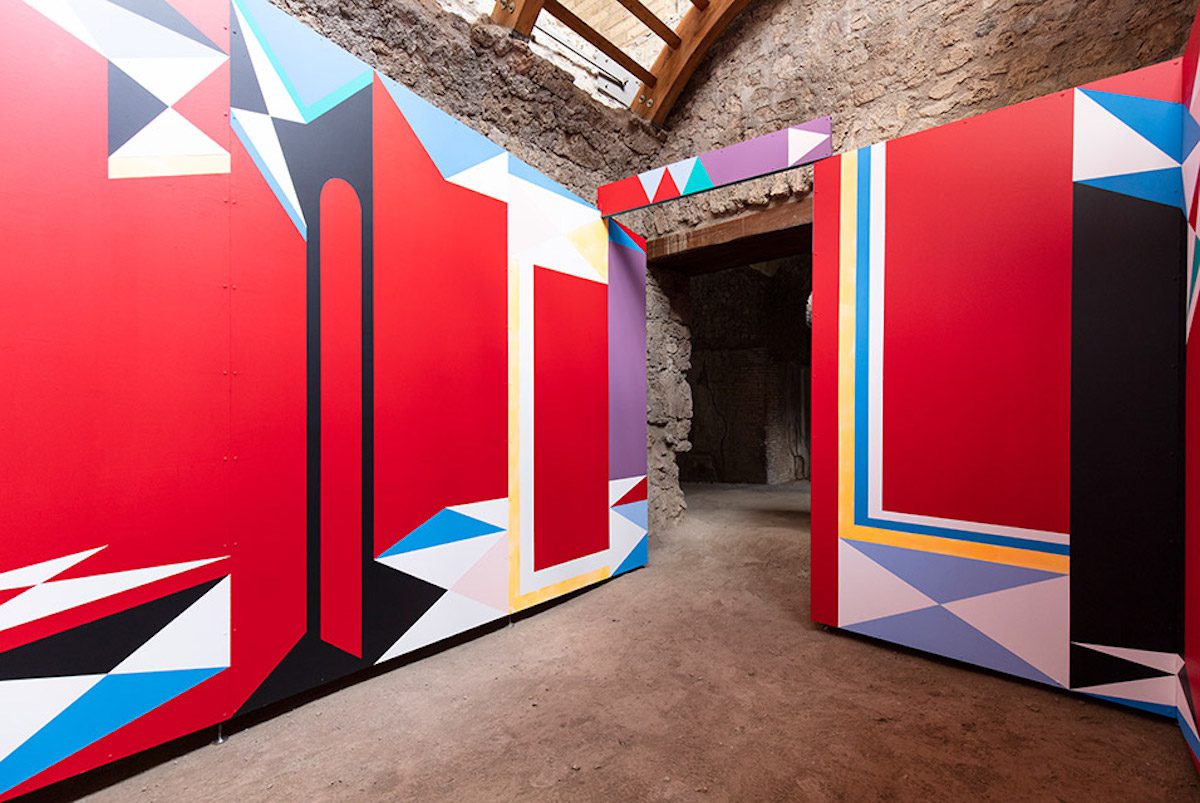For the first time, a new project merges contemporary artworks installed among the ancient ruins of Herculaneum and Pompeii, creating two art venues in stunning, historically resonant settings.
Over the next year, two Roman houses – the House of the Beautiful Courtyard at Herculaneum and the House of the Cryptoporticus in Pompeii – are, quite literally, forming the backdrop to a venture that aims to create a new dialogue between contemporary art, Roman wall painting and archaeological remains.
Once thriving and sophisticated Roman cities, Pompeii and Herculaneum were buried under tons of ash
The driving force behind Expanded Interiors is Catrin Huber, a visual artist and senior lecturer in Newcastle University’s Fine Art Department. Huber has assembled a team of experts in archaeology and digital technology (Professor Ian Haynes, Dr Thea Ravasi, Alex Turner), and contemporary art (Rosie Morris) from across the University, in order to explore the relevance of Roman wall painting and artefacts for today’s fine art practice, and to test how artists can respond to the histories and complex nature of these archaeological sites within a contemporary context.
The project combines archaeological investigation, 3D digital scanning and printing to further explore and understand the houses. This meticulous process will also help inform the new and related artistic creations of Huber.
The £270k venture, located at the previously mentioned UNESCO World Heritage Sites, promises to be an arresting and unique experience. “We are thrilled that we have been given the opportunity to work in these historic, world-renowned towns”, says Huber. “The project enables people to see contemporary art in a unique and truly inspiring setting, and we will use this once in a lifetime opportunity to create work that responds to the two Roman houses, and to Herculaneum and Pompeii. Both houses feature beautiful wall paintings, and this has inspired us to explore the design and purpose of these houses. The digital techniques we used will also help to promote fresh ways of exhibiting artefacts at archaeological sites.”

The first of Huber’s site-specific installations went on show in Herculaneum’s House of the Beautiful Courtyard on 17 May 2018. The second artwork was unveiled in the House of the Cryptoporticus, in Pompeii, on 14 July. Both exhibitions will remain open to the public until 15 January 2019.
Although intended to be very different, these exhibitions complement each other and are closely related, since both explore the relationship between wall decoration and objects.
The exhibition at Herculaneum focuses on Roman objects and their (at times) artistically altered replicas. It concentrates on female figures and faces, and brings reproductions of exquisite, rarely seen artefacts held in store-rooms at Herculaneum back to the public area of the archaeological site. This contemporary installation also works with encoded messages relating to the history and context of the site – The House of the Beautiful Courtyard was, for example, home to an Antiquarium (small museum) that was opened there in 1956 by Amedeo Maiuri, the archaeologist and director of the site at the time.
The corresponding exhibition at Pompeii responds to the magnificent, recently restored wall paintings at the House of the Cryptoporticus, where two installations of Huber’s wall paintings will incorporate replicas of Roman objects.
One installation is in the rare underground passageway or cryptoporticus. This is decorated with a gradually unfolding frieze as part of a sequence of painted panels and herms (sacred objects made from stone). Huber’s work juxtaposes the Roman frieze with the painted colonnade. It also incorporates replicas of everyday Roman objects such as oil lamps and face pots, bridging the Roman and contemporary worlds, and suggesting designs for the future.
The second contemporary installation at the House of the Cryptoporticus is a room of contemporary wall paintings. These relate to the rare Roman bathroom area of the house, with its richly painted, complex and illusionistic architectural designs. The contemporary paintings respond to a complex play of 2D and 3D space, open and closed walls, inside and outside space, and perspectival shifts.
Once thriving and sophisticated Roman cities, Pompeii and Herculaneum were buried under tons of ash and pumice when Mount Vesuvius erupted in 79 AD. They have been meticulously preserved and were given UNESCO World Heritage Site status in 1997. Today, Pompeii alone attracts around 3 million visitors each year.
“Both Herculaneum and Pompeii are incredibly popular with tourists”, says Huber. “We hope that our project will be a stimulating and thought-provoking experience for visitors, helping them to look at these remarkable World Heritage sites from a new perspective.”
Newcastle University has set-up this exciting partnership with Parco Archeologico di Pompei, Parco Archeologico di Ercolano, The Herculaneum Conservation Project, and Art Editions North.
Interiors at Pompeii. Photo: Amedeo Benestante courtesy Newcastle University

